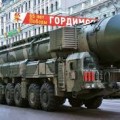Slavery is not relegated to the past, relegated to historical accounts of 18th Century sailing ships, or tales of the Roman Empire.
The U.S. State Department has released its 2019 Report on Human Trafficking, the modern slave trade. The numbers are deeply disturbing. Human trafficking is one of the most reprehensible crimes in the world. Approximately 24.9 million people are victimized, robbed of their freedom and dignity.
That number may be on the low end of the scale. A 2018 Council on Foreign Relations analysis estimated the number to be as high as 40.3 million.
The State Department notes that “Traffickers may be family members, recruiters, employers, or strangers who exploit vulnerability and circumstance to coerce victims to engage in commercial sex or deceive them into forced labor. They commit these crimes through schemes that take victims hundreds of miles away from their homes or in the same neighborhoods where they were born… Many governments deserve credit for their serious efforts to address modern slavery. Yet, much work remains. Persistent gaps in governments’ understanding of the issue continue to impede global progress, as do stubborn misperceptions about human trafficking and inconsistencies in the implementation of domestic legislation. One common misperception generates ongoing confusion—that human trafficking requires movement across borders and cannot occur solely within a country’s borders. A possible explanation for this confusion may stem from the use of the word “trafficking” in the term “trafficking in persons,” which connotes movement, and the fact that the Palermo Protocol is intended to foster international cooperation in combating organized crime networks, which typically operate transnationally. The Palermo Protocol also calls on parties to meet its objectives through interstate cooperation. This context could imply that human trafficking is exclusively transnational, requires movement, and necessarily is tied to organized crime. Yet the United Nations Convention Against International Organized Crime itself and a number of UN publications interpreting the Palermo Protocol make it clear that, when drafting domestic legislation, governments should consider human trafficking independently of both transnationality and the involvement of an organized criminal group. Each state party must establish in its domestic law the crime of human trafficking both within and between countries.”
The State Department is not alone in its concern. The Minderoo Foundation reports that “It is a confronting reality that even in the present day, men, women and children all over the world remain victims of modern slavery. They are bought and sold in public markets, forced to marry against their will and provide labour under the guise of “marriage,” forced to work inside clandestine factories on the promise of a salary that is often withheld, or on fishing boats where men and boys toil under threats of violence. They are forced to work on construction sites, in stores, on farms, or in homes as maids. Labour extracted through force, coercion, or threats produces some of the food we eat, the clothes we wear, and the footballs we kick. The minerals that men, women, and children have been made to extract from mines find their way into cosmetics, electronics, and cars, among many other products. This is modern slavery. It is widespread and pervasive, often unacknowledged, and its extent was previously believed to be unknowable.”
Human trafficking and slavery are not always relegated to the shadows. ISIS engaged in the practice openly and vigorously. Human Rights Watch’s study found that “ISIS… openly flouts the global prohibition … it has published an attempt to justify its subjugation of non-Muslim women and girls in sexual bondage. Its argument is not an academic exercise: Human Rights Watch has interviewed Yazidi women and girls who have escaped ISIS captivity. They describe a system of organized rape and sexual assault, sexual slavery, and forced marriage.”
Frank Vernuccio serves as editor-in-chief of the New York Analysis of Policy and Government.

















Follow Us